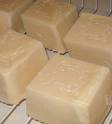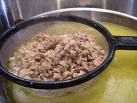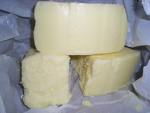Medieval bathtubs and tallow soaps: Overview of soap making down the ages
It is funny that we tend to think of ourselves to be the most modern, most hygienic and most civilized species of human race. We attribute our grasp of culture and civilization to our personal care habits like washing, cleaning and bathing. But history says that the ancients were more hygienic (at least as hygienic as) and advanced in their daily cleaning and personal care habits than we are. One instance of this is the use of bathing soaps.
Use of soap down the ages: Soap has been prevalent in history right from the time of Babylonians. An ancient Babylonian text reveals in detail the use and practice of bathing soaps. The Egyptians too used some kind of soaps during 1550 B.C. It is said that the Pharaohs and their queens, including Cleopatra used soaps to keep themselves clean and perfumed all time. The Phoenicians got to learn the art of soap making around 600 BC and used it before the Romans. At this time, the Romans, though conquerors, knew nothing of soaps and their benefits, and just used to scrape each others’ bodies before applying oils or herbs during public baths. The Germans and Gauls (French) used some kind of soap-like substance for cleansing their hair, while the Celts made a unique soapy substance for daily use.

Soap making crossed continents and reached Arabian and middle east regions too. The Palestinians used soap in the 7th century. At the same time, the people of current Iraq learned the art and used soaps as part of daily routine. The first producers of soap in Europe were the Italians and the Spanish. They made and sold soaps around the 8th century. Around 14th century, most of the European countries were into the soap business, most prominent amongst them were the French and the British. From the 18th century onwards, soap making became an industrial product. Several factories were set up to make and sell soaps commercially.
Tallow soap making: All through the medieval times, beef tallow and other fats (like lard) were used in soap making. Only later, vegetable oils (like olive oil) were used in soap making. Recreating a medieval soap is not that difficult. If you want to use a medieval soap, here are a few tips. Follow the instructions carefully and create an exact replica of a soap used by our ancestors:
Medieval soap making tips: The European version of soap making is different from the Arabian or the other versions. The European version used mostly animal fat for soap making. Here’s a glimpse:
1. Things you will need: Ashes from burnt logs, fine-meshed sieves or wickerwork with tiny withies, pot, beef tallow, lime, large spoon, olive oil or wheat flour (optional), knife or spatula-like thing.
2. Clean your pot and place it under wickerwork or sieve. Beforehand, spread the ashes you have got into the wickerwork or sieve. Pour hot water over the ashes so that it gently drips into the pot. Heat such collected water (it is actually lye water). Pour water over and over the same ashes to strengthen the lye water and improve its color.
3. When you are done with the making of lye water, boil it till it thickens. Add beef tallow and stir very well. If you can, add lime to the mixture.
4. Allow lye mixture with tallow to boil until you get a stable thickness. Allow the mixture to cool and work the soap with spade for two to four days until it is completely de-watered or coagulated.
5. Once everything is over, you can cut the hard soap into pieces that are convenient for your use. You can even add wheat flour along with tallow. If you want, you can replace the tallow with olive oil and follow the same procedures.








